Related Research Articles
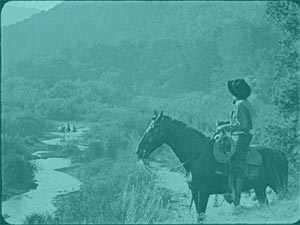
Bucking Broadway is a 1917 American silent Western film directed by John Ford, probably his sixth feature film. Long thought to be lost, along with about 60 of Ford's 70 silent films, it was found in 2002 in the archives of the CNC. It was subsequently restored and digitized and is available on the Criterion Blu-Ray of John Ford's Stagecoach.
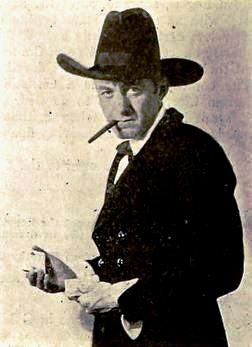
This is a list of films featuring Harry Carey.
Vester Pegg was an American actor of the silent film era. He appeared in 140 films between 1912 and 1941, mainly Westerns. He was born in Appleton City, Missouri and died in Los Angeles, California.
The Bad Man of Cheyenne is a 1917 two-reel American silent Western short featuring Harry Carey and Priscilla Dean. The film's survival status is unknown.

A 44-Calibre Mystery is a 1917 American short Western film, featuring Harry Carey. Carey plays the role of Sheriff Cheyenne Harry. He saves Kitty Flanders from Pete McGuire and takes her safely home. McGuire hides in a shack on Mr. Flanders' stake and Harry's deputy is shot dead, apparently by Mr. Flanders. McGuire offers to keep quiet about the murder if Flanders gives him half a stake and his daughter's hand in marriage. Mr. Flanders confesses his crime to Sheriff Harry and learns that he is innocent. Sheriff Harry notices McGuire's gun and accuses him of the crime, but they are killed as they try to escape. The film concludes as Kitty Flanders confesses her love to Sheriff Cheyenne as she bandages his wounds from the fight.
The Mysterious Outlaw is a 1917 American short silent Western film featuring Harry Carey and released by Universal Pictures.
The Golden Bullet is a 1917 American Western film featuring Harry Carey.
The Wrong Man is a 1917 American silent Western film, featuring Harry Carey. Like many American films of the time, The Wrong Man was subject to cuts by city and state film censorship boards. The Chicago Board of Censors cut six holdup scenes from the film.

The Soul Herder is a 1917 American silent Western film directed by John Ford, and featuring Harry Carey. The film is presumed to be lost. The film was premiered in Dayton, Ohio, on August 3, 1917.

Cheyenne's Pal is a 1917 American silent Western film directed by John Ford and featuring Harry Carey. The film is considered to be lost.

Straight Shooting is a 1917 American silent Western film directed by John Ford and featuring Harry Carey. Prints of this film survive in the International Museum of Photography and Film at George Eastman House. Like many American films of the time, Straight Shooting was subject to cuts by city and state film censorship boards. The Chicago Board of Censors refused to issue a permit for this film as submitted as it consists of detailed portrayal of murder and outlawry.

The Secret Man is a 1917 American silent Western film, directed by John Ford and featuring Harry Carey. Two of the five reels of the film survive at the Library of Congress film archive.

A Marked Man is a 1917 American silent Western film directed by John Ford and featuring Harry Carey. It is considered to be a lost film.

The Phantom Riders is a 1918 silent American Western film directed by John Ford and featuring Harry Carey. The film is considered to be lost.

Wild Women is a 1918 American silent Western comedy film directed by John Ford and featuring Harry Carey. The film is considered to be lost.
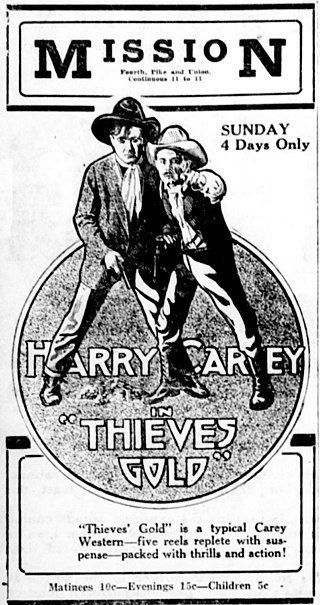
Thieves' Gold is a 1918 American Western film directed by John Ford and featuring Harry Carey. It is considered to be a lost film.
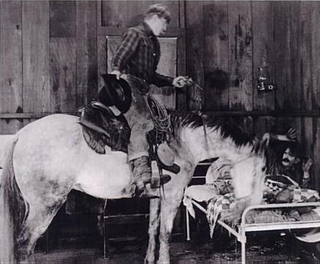
Hell Bent is a 1918 American Western film directed by John Ford and featuring Harry Carey. A print of the film exists in the Czechoslovak Film Archive.

Three Mounted Men is a 1918 American silent Western film directed by John Ford and featuring Harry Carey. The film is considered to be lost.

A Gun Fightin' Gentleman is a 1919 American Western film directed by John Ford and starring Harry Carey. Because only three reels of originally five or six are known to exist, this film is considered a partially lost film.
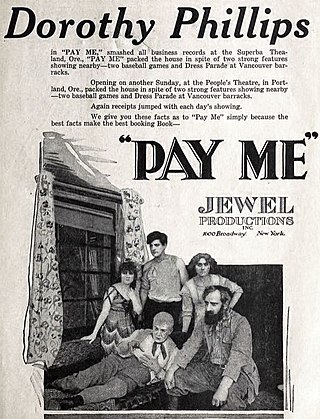
Pay Me! is a 1917 American silent drama film directed by Joe De Grasse and starring Lon Chaney, Dorothy Phillips, and William Stowell. In the United States, the film is also known as The Vengeance of the West. The screenplay was written by Bess Meredith, based on a story by Joe De Grasse. This film was Universal Pictures' first "Jewel Production" release. Once considered to be a lost film, an incomplete (23-minute) print was rediscovered in the Gosfilmofond archive in Russia in 2019. A still exists showing Lon Chaney in the role of the villainous Joe Lawson.
References
- ↑ "Synopses of Recent Releases". Exhibitors Herald. New York City: Exhibitors Herald Company. 5 (4): 35. July 21, 1917. Retrieved November 10, 2014.